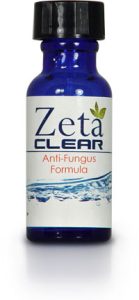Lavender Oil: Your Natural Remedy for Beating Toenail Fungus with Celiac Disease
Introduction: When Toenail Fungus Becomes a Bigger Worry for Celiacs
Dealing with toenail fungus is already a pain in the toe for anyone, but if you’re one of the brave souls battling celiac disease, it’s an even bigger headache. Celiac disease, the gluten intolerance troublemaker, weakens your immune system, making you an easy target for infections, including the dreaded toenail fungus.
Hey there, I’m here to share some amazing news with you! We’ve got
Understanding Toenail Fungus and its Impact on Celiacs
The Trouble with Toenail Fungus
Picture this: you look down at your toes and notice those unsightly white or yellow spots taking over your nails. Yikes! That’s the annoying toenail fungus, just making itself at home. If you don’t show it who’s boss, it’ll spread and turn your nails into a crumbling mess. Not cool!
Celiacs: Strong, but Vulnerable
If you’re a celiac disease warrior, you know how it feels to fight battles on multiple fronts. With your immune system already under attack from gluten, those sneaky fungi have an even better chance of invading your toenails. And as if that’s not enough, the lack of proper nutrients due to celiac disease might make the fight against the fungus even tougher.
Lavender Oil: Your Antifungal Sidekick
The Magical Powers of Lavender Oil

Lavender oil is not your average pretty-smelling oil; it’s a tough fighter against fungi too! Squeezed out of the lavender plant, this essential oil is a natural antifungal superhero. Say hello to a potent solution for tackling toenail fungus!
The Science Has Our Back
You might be wondering if this natural remedy is legit. Well, let me tell you, science has got our back on this one! Researchers have put lavender oil through its paces and found it’s a pro at taking down various fungi, including those causing toenail infections.
Gentle Love for Celiacs
Now, you might be concerned about trying new stuff with your celiac condition. No worries! Lavender oil is usually gentle on the skin and unlikely to cause trouble. But hey, just to be safe, we’ll do a little patch test first.
How to Use Lavender Oil to Say Goodbye to Toenail Fungus
Step-by-Step Action Plan
Are you ready to show that pesky toenail fungus who’s boss? Let’s do this with lavender oil!
- Gather Your Arsenal: Get yourself some high-quality lavender essential oil (go organic if you can), a carrier oil like coconut or
, cotton balls or Q-tips for the magic touch, nail clippers, and a nail file. - Prep Your Toenails: Trim those infected toenails as much as you comfortably can. Give them a gentle filing to reduce thickness, so the lavender oil can penetrate like a pro.
- Dilute the Lavender Oil: Remember, lavender oil is strong stuff, so let’s dilute it first. Mix a few drops of lavender oil with your chosen carrier oil in a clean container. About 2 to 3 drops of lavender oil per teaspoon of carrier oil should do the trick.
- Patch Test Power: Before you go all-out on your toenails, let’s make sure your skin loves lavender oil too. A small patch test on a bit of skin will give us the green light.
- The Lavender Treatment: Time to work that lavender oil magic! Use a cotton ball or Q-tip to apply the diluted lavender oil to the infected toenail and the skin around it. Be thorough and make sure you cover all the sneaky spots. Repeat this magical treatment twice daily for best results.
Remember, we’re not chasing miracles here. Healing takes a bit of time, so be patient and stick with the lavender oil treatment. You’ll soon see your nails on the road to recovery.
Extra Tips for Beating Toenail Fungus
To speed up the healing process and give that fungus a tough time, here are some bonus tips to follow:
- Show Your Feet Some TLC: Keep your feet clean and dry, my friend. After washing, make sure they’re thoroughly dry, especially between the toes—that’s where fungi love to party.
- Shoes: Let Your Toes Breathe: Your feet need some air too! Go for shoes made of breathable materials like leather or mesh. No suffocating fungus allowed!
- Friendly Socks: Give your toes cozy and breathable socks made of natural fibers like cotton or bamboo. No room for fungus to settle in here!
- No Barefoot Adventures: Keep those feet covered in public places like gyms, pools, and locker rooms. Fungi are sneaky and contagious!
- Fuel Your Immune System: Your immune system needs some love too. For celiacs, a well-balanced diet with gluten-free whole grains, fruits, veggies, and lean proteins will keep you strong.
Conclusion: Embrace the Lavender Power!
Now you’re armed with the lavender oil secret weapon—ready to conquer the toenail fungus beast. With its scientific backing and gentle touch, lavender oil is the perfect ally for celiacs like you.
Stay consistent with your lavender oil treatment, pamper your feet, and follow the bonus tips. That stubborn toenail fungus won’t know what hit it! Soon enough, you’ll have healthier and happier toenails, and your confidence will be ready to shine bright. So, let’s embrace the lavender power and wave goodbye to toenail fungus, one brave step at a time!
ZetaClear – An All in One Cure
ZetaClear is a natural treatment in two parts that uses Lavender Oil and other powerful ingredients:
Remember, I’m here to help, but it’s essential to consult a healthcare professional before trying any new treatment, especially if you have underlying health conditions or are pregnant. This is not medical advice; it’s a friendly guide to help you on your journey to healthier toes!





